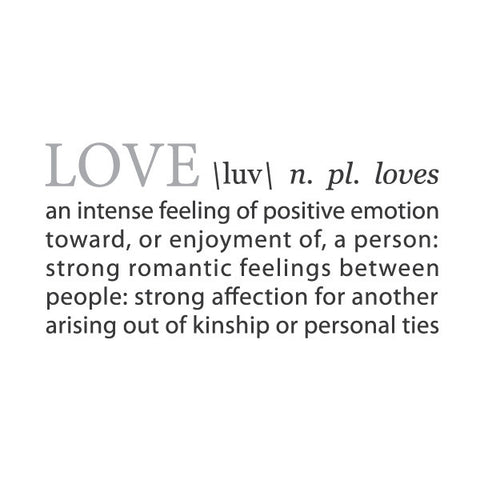Source Google.com.pk
What is love? This fundamental question, posed by Shakespeare in Twelfth Night, is one that also has captured the imagination of social scientists. However, unlike Shakespeare and the philosophers, poets, and writers before him, social scientists have only recently turned their attention to this subject. Psychologists such as Freud and Watson touched on the topic of love in the 1920s. However, social psychologists did not give love serious conceptual or empirical attention until the 1970s when Zick Rubin (1970) and Ellen Berscheid and Elaine Hatfield (1974) blazed the trail. Their definitions and taxonomies and those of other experts are presented next, followed by research on lay people’s conceptions of love.
The purpose of this chapter is to document social science research on love, with an emphasis on social psychological contributions. The chapter begins with the fundamental question: What is love? Laypeople's and social scientists' answers to this question are presented, including Berscheid's (2010) recent model that delineates four basic kinds of love: romantic/passionate love, companionate love, compassionate love, and attachment love. The focus then shifts to measurement of the kinds of love specified in Berscheid's model. Scales that assess beliefs and conceptions of these types of love, as well as those that measure the experience of these kinds of love, are presented. I then turn to research on individual (gender, personality) and cultural differences in conceptions and the experience of the four kinds of love. The final section of the chapter is devoted to the relational implications of conceptions and the experience of love, including the relation between love and relationship satisfaction, the relation between love and commitment, and the role of love in the deterioration and dissolution of relationships. The chapter ends with a discussion of future directions for research on this important topic.
Well over a century ago, philosopher Henry Finck observed that, “Love is such a tissue of paradoxes, and exists in such an endless variety of forms and shades that you may say anything about it that you please, and it is likely to be correct” (Finck, 1902, p. 1). In the time that has passed since Finck’s wry observation, social scientists have produced an impressive body of work on the topic of love. It is no longer the case that one can say whatever one pleases about love and it is likely to be correct. As shall be seen in this chapter, there are now empirically based answers to questions about the meaning of love and how it is experienced in close relationships.
The purpose of this chapter is to document what we know about love, based on social science research, with a focus on social psychological contributions. In the first major section of the chapter, the focus is on the fundamental question: What is love? Social scientists’ answers to this question are presented, including Berscheid’s (2006, 2010) recent model that delineates four basic kinds of love, namely romantic/passionate love, companionate love, compassionate love, and attachment love. (In this chapter, Berscheid’s model is used as an integrative framework within which to situate extant research on love.) Experts’ views of love are followed by a discussion of research on lay conceptions of love. The focus then shifts to measurement of the kinds of love specified in Berscheid’s model. Scales that assess conceptions of these types of love as well as those that measure the experience of these kinds of love are presented. Next, I turn to research on individual and cultural differences in conceptions and the experience of these kinds of love. The rest of the chapter is devoted to the relational implications of love, including the relation between love and commitment, the relation between love and relationship satisfaction, and, finally, the role of love in the deterioration and dissolution of relationships. The chapter ends with a discussion of future directions for research on love.
Well over a century ago, philosopher Henry Finck observed that, “Love is such a tissue of paradoxes, and exists in such an endless variety of forms and shades that you may say anything about it that you please, and it is likely to be correct” (Finck, 1902, p. 1). In the time that has passed since Finck’s wry observation, social scientists have produced an impressive body of work on the topic of love. It is no longer the case that one can say whatever one pleases about love and it is likely to be correct. As shall be seen in this chapter, there are now empirically based answers to questions about the meaning of love and how it is experienced in close relationships.
The purpose of this chapter is to document what we know about love, based on social science research, with a focus on social psychological contributions. In the first major section of the chapter, the focus is on the fundamental question: What is love? Social scientists’ answers to this question are presented, including Berscheid’s (2006, 2010) recent model that delineates four basic kinds of love, namely romantic/passionate love, companionate love, compassionate love, and attachment love. (In this chapter, Berscheid’s model is used as an integrative framework within which to situate extant research on love.) Experts’ views of love are followed by a discussion of research on lay conceptions of love. The focus then shifts to measurement of the kinds of love specified in Berscheid’s model. Scales that assess conceptions of these types of love as well as those that measure the experience of these kinds of love are presented. Next, I turn to research on individual and cultural differences in conceptions and the experience of these kinds of love. The rest of the chapter is devoted to the relational implications of love, including the relation between love and commitment, the relation between love and relationship satisfaction, and, finally, the role of love in the deterioration and dissolution of relationships. The chapter ends with a discussion of future directions for research on love.
Quotes Of Love Sad Quotes About Love That Make Your Cry and Pain Tumblr For Girls that make you cry for girls for Him for Boys That Hurts Tagalog and Pain Tumblr
Quotes Of Love Sad Quotes About Love That Make Your Cry and Pain Tumblr For Girls that make you cry for girls for Him for Boys That Hurts Tagalog and Pain Tumblr
Quotes Of Love Sad Quotes About Love That Make Your Cry and Pain Tumblr For Girls that make you cry for girls for Him for Boys That Hurts Tagalog and Pain Tumblr
Quotes Of Love Sad Quotes About Love That Make Your Cry and Pain Tumblr For Girls that make you cry for girls for Him for Boys That Hurts Tagalog and Pain Tumblr
Quotes Of Love Sad Quotes About Love That Make Your Cry and Pain Tumblr For Girls that make you cry for girls for Him for Boys That Hurts Tagalog and Pain Tumblr
Quotes Of Love Sad Quotes About Love That Make Your Cry and Pain Tumblr For Girls that make you cry for girls for Him for Boys That Hurts Tagalog and Pain Tumblr
Quotes Of Love Sad Quotes About Love That Make Your Cry and Pain Tumblr For Girls that make you cry for girls for Him for Boys That Hurts Tagalog and Pain Tumblr
Quotes Of Love Sad Quotes About Love That Make Your Cry and Pain Tumblr For Girls that make you cry for girls for Him for Boys That Hurts Tagalog and Pain Tumblr
Quotes Of Love Sad Quotes About Love That Make Your Cry and Pain Tumblr For Girls that make you cry for girls for Him for Boys That Hurts Tagalog and Pain Tumblr
Quotes Of Love Sad Quotes About Love That Make Your Cry and Pain Tumblr For Girls that make you cry for girls for Him for Boys That Hurts Tagalog and Pain Tumblr
Quotes Of Love Sad Quotes About Love That Make Your Cry and Pain Tumblr For Girls that make you cry for girls for Him for Boys That Hurts Tagalog and Pain Tumblr










No comments:
Post a Comment